Exercise routines should include stretching, a simple but important component. The increased blood flow to the muscles prevents injuries and improves performance.
The joints are also more flexible, which allows for easier movement without straining them. For players of padel tennis to avoid injuries caused by tight muscles, they should stretch before and after games.
Tennis players, paddle tennis players, and padel players will all benefit from stretching in this article.
Why is stretching important?
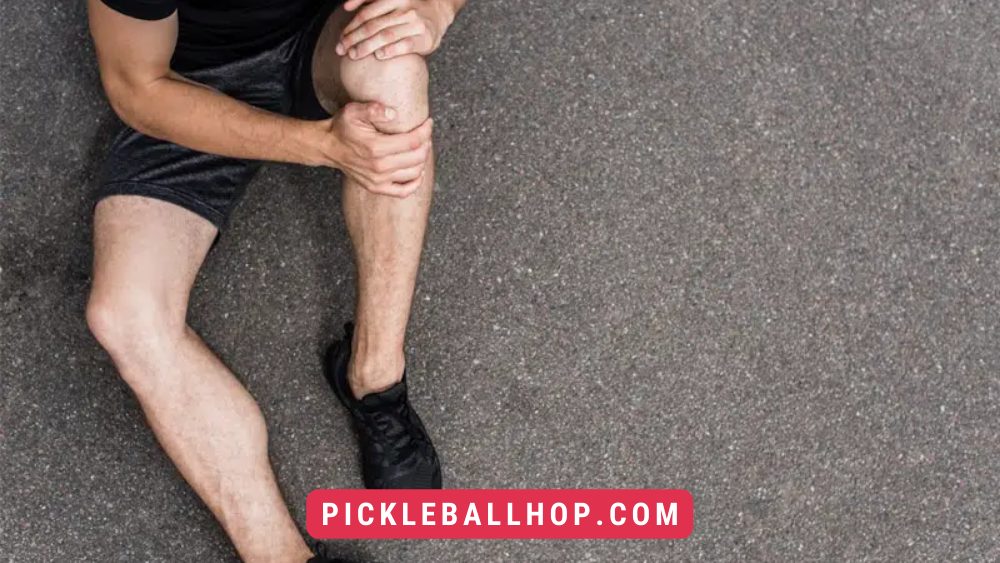 As a result, muscle soreness is reduced, performance is improved, and joints are more flexible. Injuries can also be prevented with it!
As a result, muscle soreness is reduced, performance is improved, and joints are more flexible. Injuries can also be prevented with it!
Any player of padel tennis or paddle tennis should consider stretching as a must-do activity.
The benefits of stretching:
Joint flexibility is increased, which prevents injuries. Tennis elbow and knee problems can be avoided by using it.
Additionally, it improves performance by increasing blood flow to muscles!
As a result, tight muscles are less likely to cause soreness and injuries!
For paddle tennis and padel players, stretching has endless benefits. Take advantage of every opportunity to stretch during a game or practice session.
You may enjoy reading How to Play Padel
What is the best way to warm up before playing padel?
Prior to playing padel tennis, it is important to warm up properly.
Warming up with dynamic stretches or with the ball can help improve technique. Keep in mind not to overdo it, though! If you overworked your muscles before an intense game, you don’t want anything to go wrong.
Make sure you warm up your muscles and joints with dynamic exercises instead of static ones before a game. We will explain the difference between dynamic stretches and static stretches below.
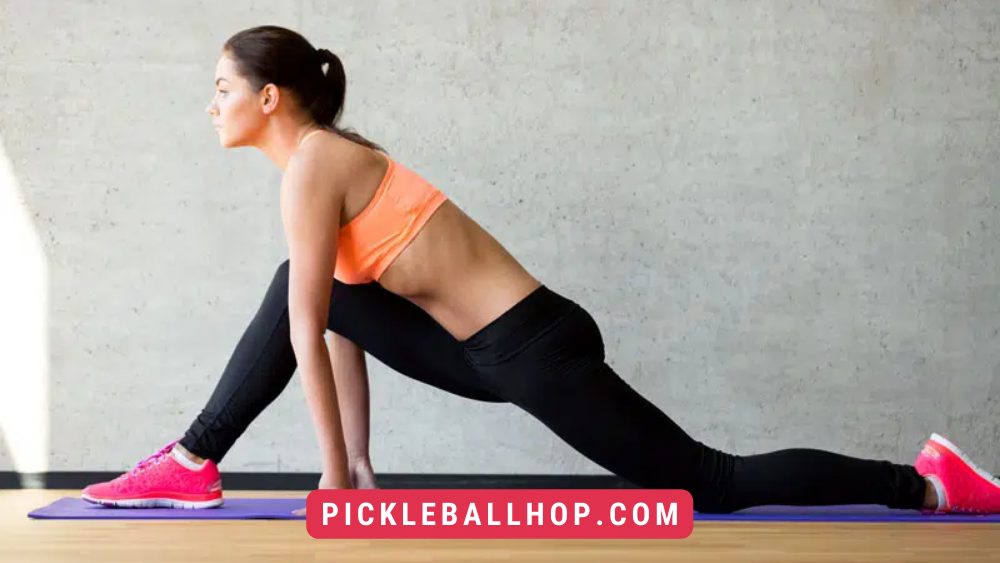
Four essential stretches in padel tennis
In this guide, we tell you how to stretch after playing padel, which will give you four essential stretches. There are stretches for both the lower body and the upper body included in the exercises.
In case of discomfort or pain, change exercises. The moment your muscles begin to fatigue or you feel pain, stop exercising!
Hamstring stretch
Raise one leg while standing on the other. Stretch your hamstrings (back of thighs) until you feel a stretch. Switch legs after 30 seconds, and hold for 30 more seconds. Each side should be repeated three times. If you raise one leg while lying on the ground, you can also stretch your hamstrings.
Hip flexors stretch
Put both hands on the ground behind you as you lie face down. Bend at the waist as you raise your hips off the floor. Keep your back straight. Switch to the other side after 30 seconds. On each side, repeat the process three times.
Calf stretch
Bend one leg at a 90-degree angle while standing on one leg. Your calf (back of lower legs) should feel stretched as you lift your hips off of the ground. For 30 seconds, hold each side, then switch sides. Each side should be repeated three times.
Shoulder joint stretch
Hold your arms overhead and stand with your feet shoulder-width apart. Keep your hands relaxed as you push your elbows back. Switch to the other side after 30 seconds. Each side should be repeated three times.
There are many stretching exercises for padel tennis that can be performed before and after matches, including the four stretches listed here.
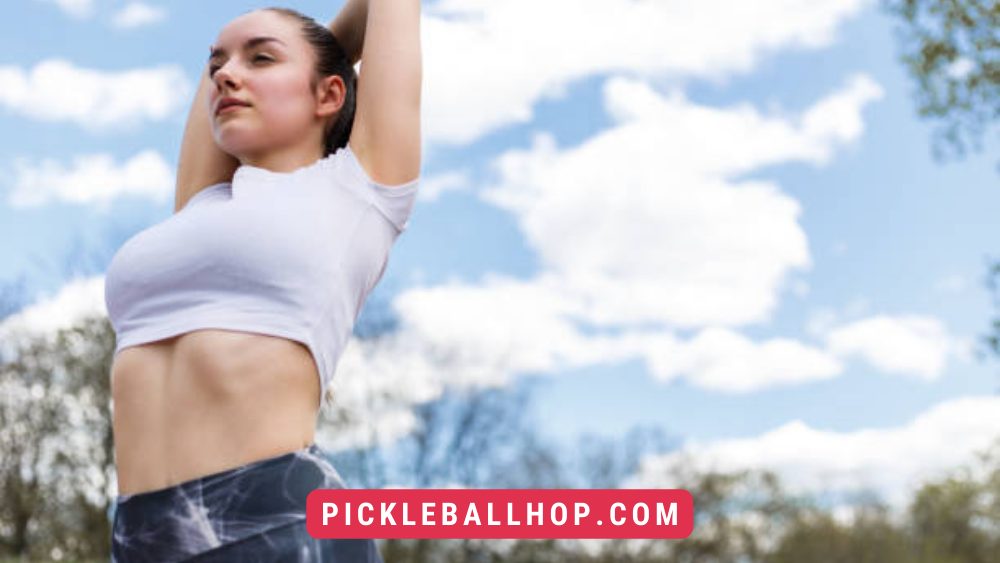
What is the difference between static and dynamic stretching?
An extended stretching session is referred to as a static stretch. In dynamic stretching, the muscles are tensed for a brief period before being released.
It is important for padel tennis players to warm up their muscles before playing – this will help them avoid injuries.
It is also important to stretch after a game to help muscles cool down and recover.
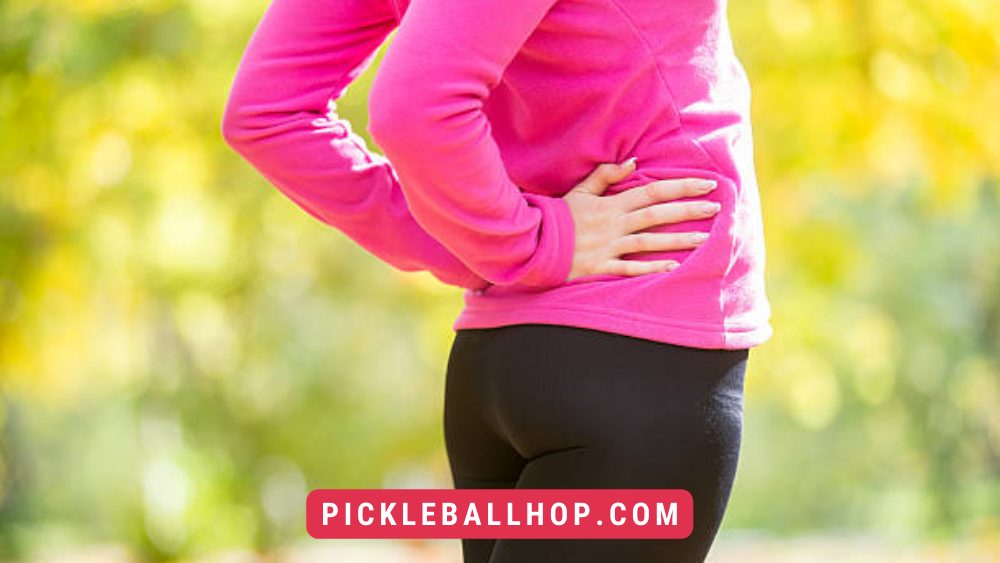
What is the difference between passive and active stretching?
When someone is doing passive stretching, they relax and allow their muscles to be stretched. If you need help or if a stretch band is available, you can ask another person for help.
Stretching that is active involves the person actively moving their body to increase range of motion and flexibility without any assistance.
When a person is unable to initiate muscle movement from within their body (elderly, injured), passive stretches are more effective. Active stretches are better for those seeking strength and mobility in a specific area of their body, while passive stretches promote relaxation and flexibility.
When should you avoid stretching your muscles?
- If you want your muscles to be explosive and supple before a paddle session, avoid static stretches. Muscles have good elasticity, like rubber bands. When a muscle is stretched statically before a workout, it becomes limp.
- Individuals with hypermobility. Whenever joints are held in extreme positions, such as when they cross straight arms or legs, they are considered hypermobile. To put it another way, it is not wise to strive for extremes because they can cause you harm. Hypermobile people should avoid stretching these parts of their bodies in order to maintain their elasticity.
- A muscle that has been strained or ruptured within the first few days after the injury. Rehabilitation can be sped up by stretching later on.
How do you stretch for tennis?
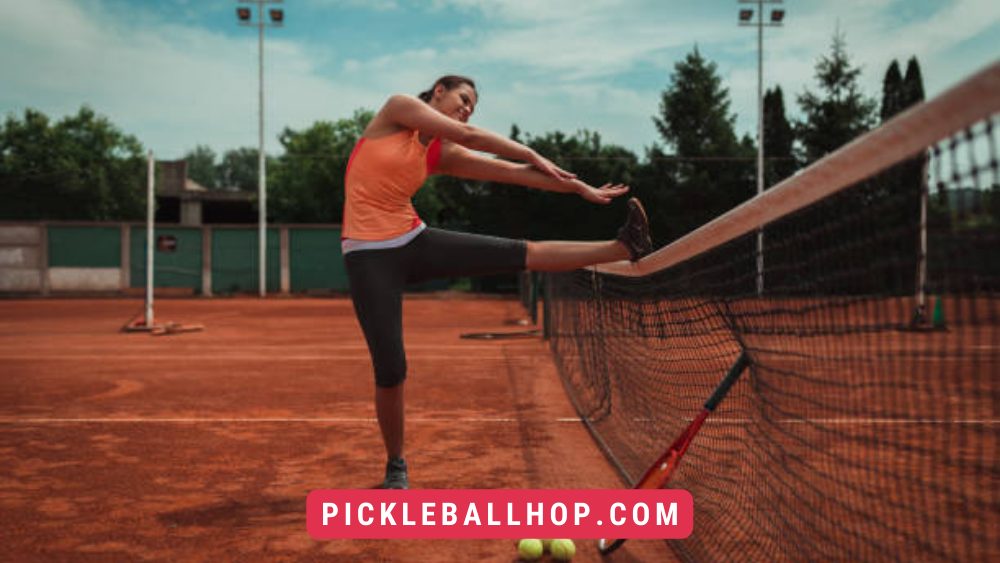 Padel and paddle tennis players, as well as anyone else who plays a racquet sport, must follow the same principles. Dynamic exercises should be performed before a game, and static exercises should be performed afterward.
Padel and paddle tennis players, as well as anyone else who plays a racquet sport, must follow the same principles. Dynamic exercises should be performed before a game, and static exercises should be performed afterward.
Stretching during and after padel tennis matches is beneficial, so be sure to do it each and every time you play. If you avoid injury or soreness, you’ll be glad you did.



